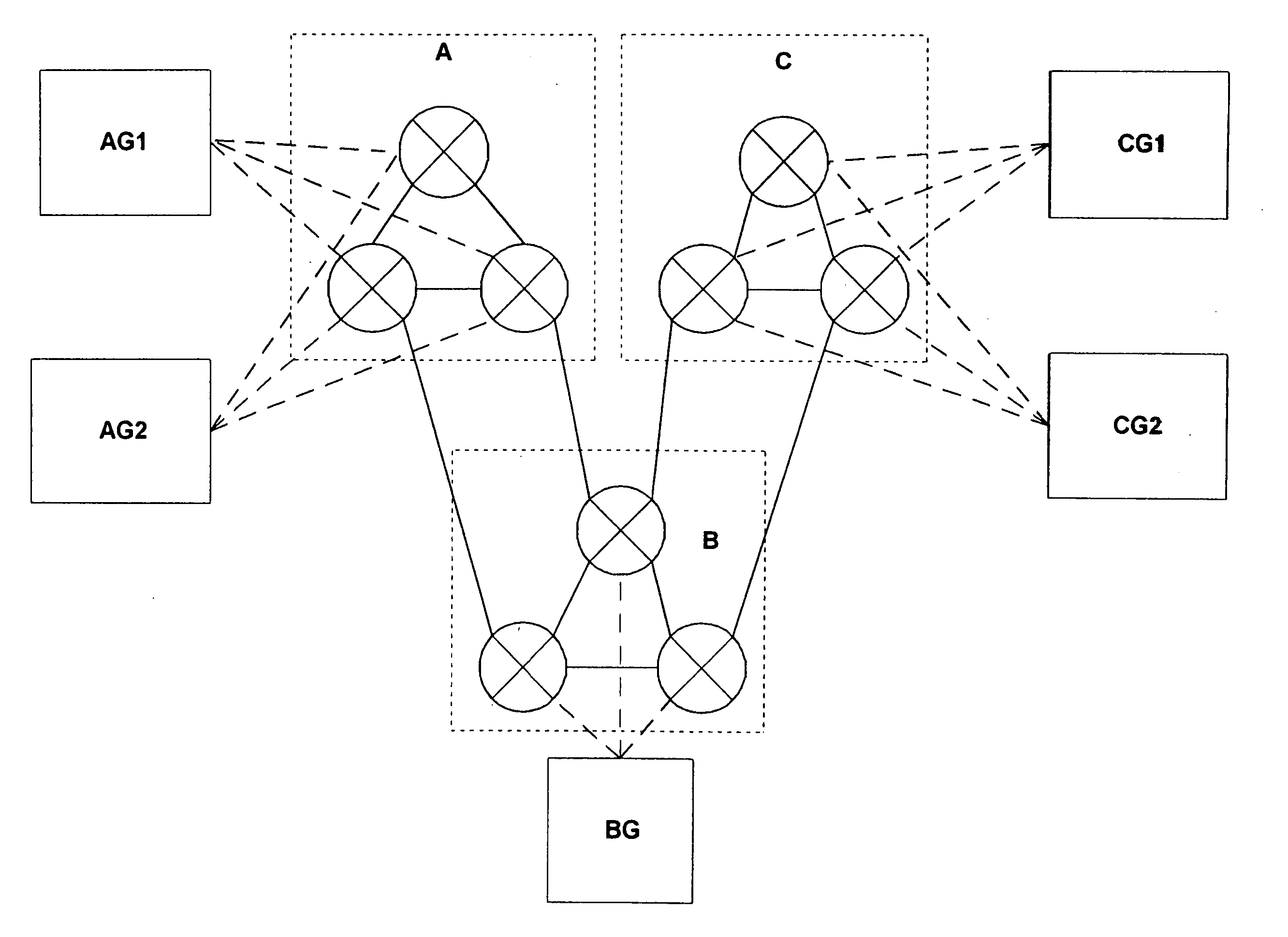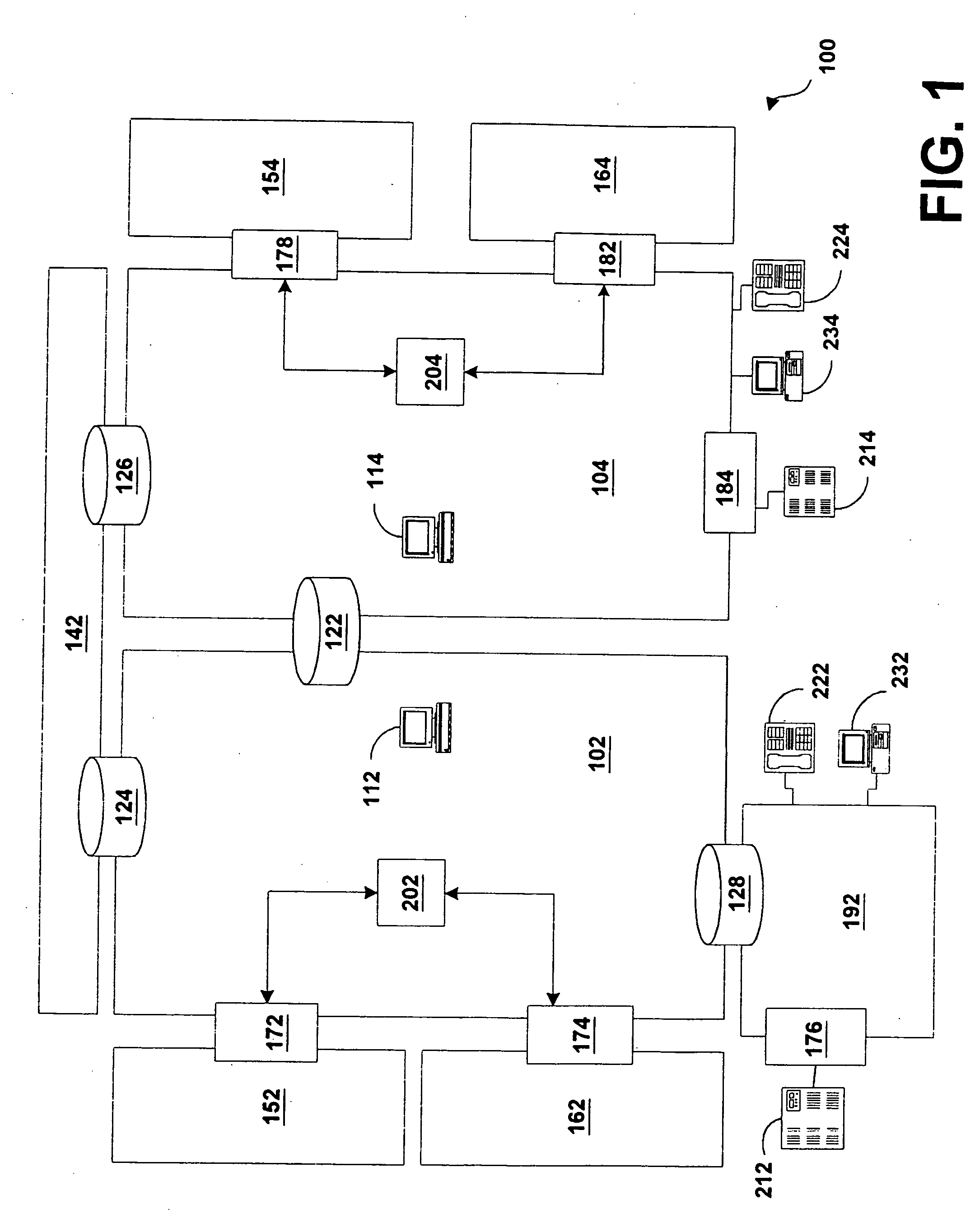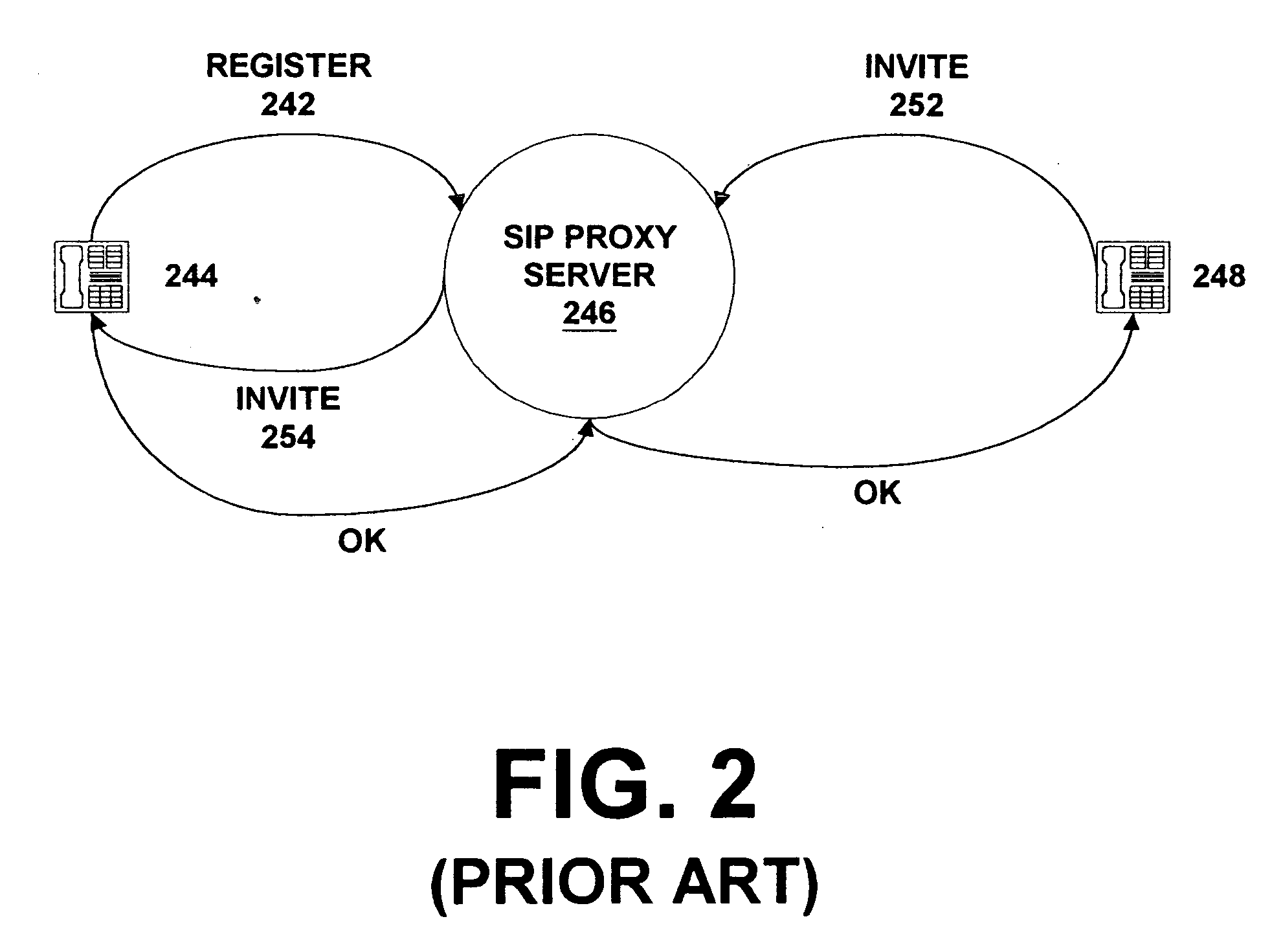Unfortunately, the PSTN is not currently capable of routing an actual communication session on anything other than an address that conforms to the hierarchy present in the PSTN since telephone numbers and their parts are used to discover a path to an endpoint of the communication Portability mechanisms require a phantom or shadow number to direct the communication through the network.
IP routers are used to take a packet from one network (or link) and place it onto another network (or link) Tables are located within IP routers that contain information or criteria used to determine a best way to route a packet An example of this information may be the state of network links and programmed distance indications Unfortunately, IP routers typically route packets by destination
IP address, which does not assist in finding a proper route for transportation There are some exceptions to this routing system, however.
Unfortunately, in IP networks, there is no end-to-end path allocation.
Additionally, most telephone networks will either forward calls or inform callers that the old user of an address has changed to a new address Similarly, today's data networks use online directories to help users find other
Internet users, but these directories are insufficient for many reasons These reasons include, but are not limited to, the
poor quality of information since most of the directories are built up from electronic-mail (e-mail) servers, the
directory information is not maintained as part of a billing process, which leads to stale entries in most e-mail systems, and not all e-mail systems provide data to the
directory providers.
In addition, Internet directories do not include a geographic location since geographic locations are not part of Internet domain addresses, unless the
directory entry is entered manually When trying to locate a user on a
telephone network, the search can be narrowed if the city or town is known, but this type of search is not as easy in Internet directories Uniform resource locators (URLs) typically define endpoints or locations on
the Internet.
There are currently no known universal registries on
the Internet.
The suggestion from the ITU to use Universal Portable Telephone (UPT) numbers for IP endpoints to avoid overlapping traditional wired telephone numbers is valid and would allow for addressable IP endpoints It is possible to combine the above two proposals to enable Internet calling to and from the PSTN Unfortunately, there are several limitations to this technology These limitations include: DNS distribution and replication has significant latency; DNS
address resolution can be slow; DNS servers may not be capable of handling the number of projected addresses; DNS servers are incapable of managing duplicate entries (except through round robin techniques); DNS employs parallel update mechanisms, which may result in unintentional duplicate entries;
private network addresses or addressing gateways may result in duplicate entries or matches; no policy exists to
handle the management of the resources requested; and, no solution exists to
handle the number overlap between the PSTN and the data networks.
Unfortunately, when running a network that consists of many softswitches, the owner of the network has many different points of policy management that need to be maintained to create a full mesh.
Such policy management issues include assuring that each
softswitch “knows the
IP address of each other
softswitch and what telephone numbers or PSTN to which they connect.” When running softswitches from multiple vendors, further management issues arise.
The management issues are then more complicated due to the fact that the equipment may be managed through different interfaces.
In the full
mesh routing arrangement, the routing of calls may be difficult since several different egress softswitches may be full or not functioning.
This search effort can be greatly reduced if a pure random distribution is implemented, however, it is assumed that some routes would be preferred over others due to cost or quality, thereby exacerbating the problem.
Unfortunately, these gateways have low densities and frequently lack the sophistication of softswitches in setting up routing policies.
These routers, therefore, cannot be interconnected to create networks without a
softswitch controller.
Unfortunately, the hierarchical model can be complex when trying to apply it to today's
peering environment While the higher levels of the hierarchy are owned by some entity, from a business or political environment, it is hard to imagine how ownership and
peering issues can be resolved since the data networks do not adhere to a hierarchy Because the data network owners are competing for the same business, it is unlikely that
peering arrangements, which are not mutually beneficial, can be established The hierarchical model also creates single points of failure that can lead to larger
ripple effects.
Given this, single softswitches, which could affect large pieces of a network, are ill advised.
Since there are currently no standards for accomplishing this, vendors have been building proprietary methods; and these proprietary methods may not interoperate correctly.
 Login to View More
Login to View More  Login to View More
Login to View More 


